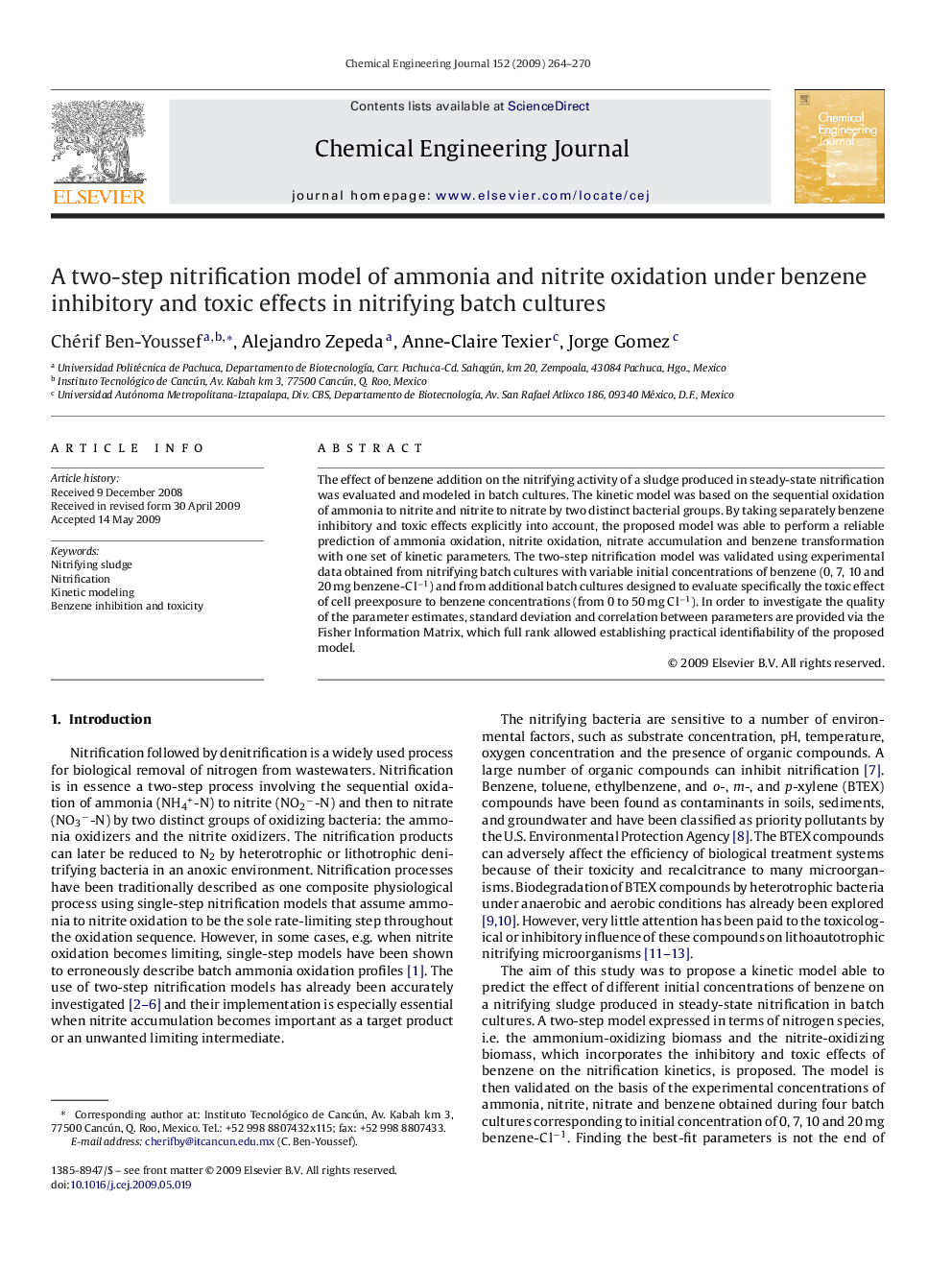| Article ID | Journal | Published Year | Pages | File Type |
|---|---|---|---|---|
| 153656 | Chemical Engineering Journal | 2009 | 7 Pages |
The effect of benzene addition on the nitrifying activity of a sludge produced in steady-state nitrification was evaluated and modeled in batch cultures. The kinetic model was based on the sequential oxidation of ammonia to nitrite and nitrite to nitrate by two distinct bacterial groups. By taking separately benzene inhibitory and toxic effects explicitly into account, the proposed model was able to perform a reliable prediction of ammonia oxidation, nitrite oxidation, nitrate accumulation and benzene transformation with one set of kinetic parameters. The two-step nitrification model was validated using experimental data obtained from nitrifying batch cultures with variable initial concentrations of benzene (0, 7, 10 and 20 mg benzene-C l−1) and from additional batch cultures designed to evaluate specifically the toxic effect of cell preexposure to benzene concentrations (from 0 to 50 mg C l−1). In order to investigate the quality of the parameter estimates, standard deviation and correlation between parameters are provided via the Fisher Information Matrix, which full rank allowed establishing practical identifiability of the proposed model.
